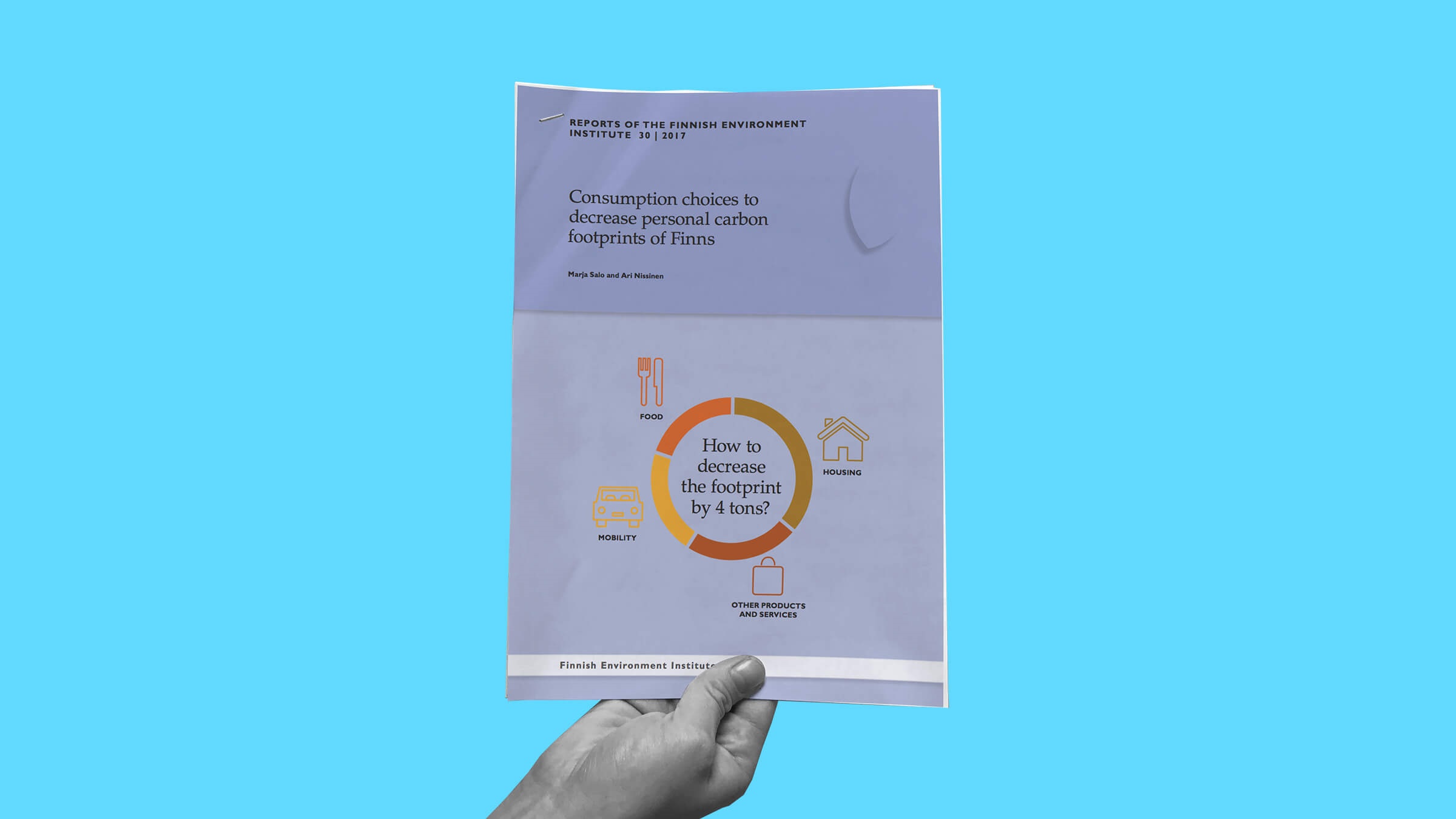Climate change mitigation requires action in all spheres of society. The role of household consumption is often overlooked. However, 72% of global greenhouse gas (GHG) emissions are related to household consumption, while the rest stem from government consumption and investments. The result from a Finnish study is quite similar: households accounted for 68% of the GHG emissions of domestic final consumption in Finland, whereas government consumption and investments were responsible for the other 32% .
The key question in this report is: How much can a typical Finn decrease one’s GHG emissions with consumption decisions? To address this question, we took the average GHG emissions from consumption as a starting point. In Finland in 2010, the average per capita GHG emissions from consumption expenditure was 11.5 tonnes of CO2e. Between 2000 and 2013, the average per capita GHG emissions fluctuated from 9.6 tonnes to 11.8 tonnes. The per capita consumption carbon footprint in Finland is on the high end of the European scale but smaller compared to Australia and the United States, for instance.
We listed measures that an ordinary Finnish consumer can use to decrease their GHG emissions with existing technology and solutions, and estimated the potential to avoid emissions with these activities. We focused on the most important sources of GHG emissions in Finland, including housing and especially energy-related emissions, private car travel and food choices. We also examined the consumption of goods and services, although in that particular category the emissions consist of a wide range of goods and services, and the potential of single or small numbers of actions is challenging to define.
The GHG emissions include housing, travel, food, consumption of other goods and services. We used the consumption perspective, i.e. the emissions of consumption in Finnish households were taken into account regardless of their geographic origin. Therefore, the embodied emissions of imported goods were included. We estimated that the carbon footprint of an average Finn could be decreased from 11.5 tkg of CO2e to 7.2 tkg. In this paper, we present the measures for housing, travel, food, and goods and services that can be used to reach these savings.
While consumption choices have potential in mitigating climate change, we note that there are barriers in reducing GHG emissions with consumption choices. The solutions to overcome the barriers can be market-based, i.e. business models in which the product or service produces less GHG emissions. Informational measures such as labelling help consumers choose products and services with lower GHG emissions. Public policies also play a role in speeding up product development, as shown by the examples of energy labelling of home appliances and phasing out inefficient lighting solutions. Informational measures can also include tools such as carbon footprint calculators and campaigns to raise awareness and engage people to take action.
In this report we focused on the GHG emissions. However, other environmental footprints and indicators also show the unsustainability of current consumption patterns.

















Recommended
Have some more.